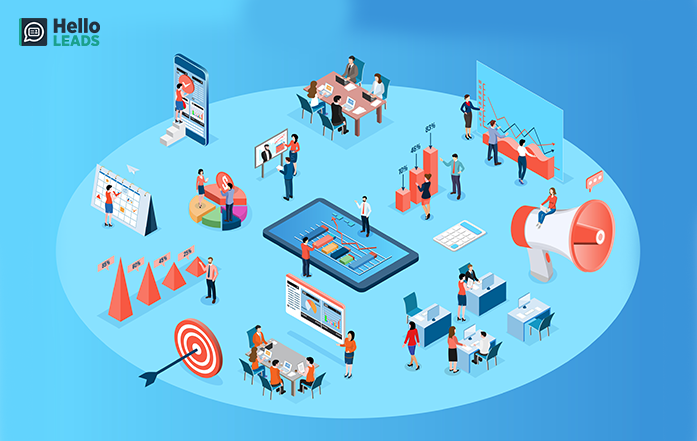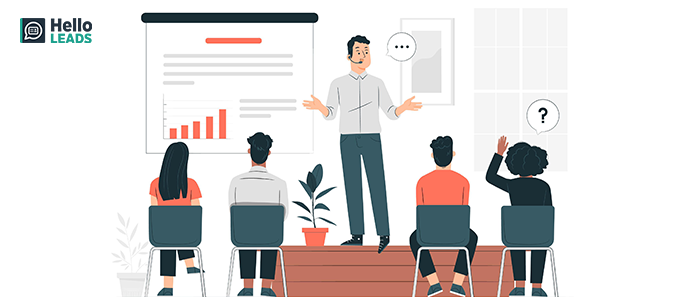
Customers today face an increasing number of product options and complexity. Their businesses are obsessed with cost and ROI. As a result, their expectations of Sales representatives are shifting. They are not looking for someone to offer them lunch or beverages in exchange for a quick order. They are looking for a trustworthy partner who truly listens to their needs, is easy to deal with, and assists them in meeting their business objectives on schedule. Customers want providers to be open and honest about what they can and cannot deliver. They don’t want or can’t afford to do business with companies that don’t contact them once their order is placed.
In the last year, the majority of experienced salespeople have done nothing to improve their sales training or knowledge. Even though they work in a position where selling more means making more, most do not invest in the skill development activities required to raise their proficiency and total revenues. They assume that experience equals training.
Most seasoned salesmen regard selling as an intuitive art rather than a planned, repeatable science. Their sales calls are unstructured and inconsistent. They are persuasively excellent on one call, but “crash and burn” on the next. They feel that each sales call is so unique and unpredictable that they basically “wing it” on each one, hoping to say something persuasive when they open their mouths.
Learning does not exist in a vacuum:
Sales training staples a decade ago mostly consisted of the yearly kick-off meeting, where sales teams were brought in from all over to attend all-day lectures and courses, which they were expected to magically absorb, process, and retain – and thereby boost their selling effectiveness. Follow-up materials were frequently generic (i.e., not tailored to a specific prospect or industry, or designed to outperform a specific competition), were not evaluated by others on the sales team, and were quickly obsolete or stashed away someplace in the labyrinth that is a corporate intranet.
Impact of Today’s tech:
With today’s technologies, sales organizations are foregoing these events in favor of a far more profitable approach: a comprehensive and ongoing sales training program that integrates with a sales rep’s daily tasks and includes many contact points to assure full content mastery. Reinforcement and periodic follow-up are acknowledged as vital in this new paradigm of sales training for equipping salespeople with the ability to perform today – and to continue doing well over time. In guiding their sales teams, the majority of sales companies have met two gaps. Most sales leaders encourage their staff to improve without understanding what those entails (the first). Using recognized standards principles such as ISO to increase the consistency and quality of your sales team gap. They also lack defined definitions of the desired competencies or best practices for their employees (the second gap).
If you want to guide your sales staff to a stronger selling position, you must provide them with precise procedures and frameworks to follow and usher in the concept of
Continuous Learning to strengthen the skills of your salespeople.
What is Continuous Learning?
A continuous learning model focuses on the main stages of learning:
- Receiving new knowledge,
- Assimilating it into long-term memory through periodic reinforcement,
- Being able to swiftly access high-impact refreshers at the precise time and location of need.
These basic phases, which comprise curriculum learning, reinforcement learning, and just-in-time learning, constitute the modern sales organization’s tool belt and are delivered via cutting-edge technologies.
Continuous learning taps into
salespeople’s natural curiosity and drives them to be lifelong learners,
providing them with the opportunity to grasp new information and abilities
continually. Developing a culture of continuous learning within a sales
organization necessitates the buy-in and engagement of both managers and reps,
a task made significantly easier by the use of technology platforms that ensure
delivery of the right content and support at the right time during the sales
process.
Growing Unstoppable Sales Team
Sales companies rarely experience dramatic improvements. Most sales executives seeking to change lack the time, awareness, dedication, and support of the rest of their business, or all of the other components required to achieve and then sustain successful long-term change. This is where continuous learning plays a pivotal role.
Impact on Salesperson’s development process

Continuous learning approaches, when applied effectively, can be employed throughout a salesperson’s development process, from initial onboarding and training through just-in-time refreshers of concepts in preparation for a sales call. Organizations that have used this strategy have already seen benefits in terms of sales rep readiness, an increase in pleasant customer engagements, improved quota achievement, as well as speedier onboarding. It’s fairly uncommon for firms to encounter a “skills gap” with their personnel base as they expand their operations. To match the expanding demand in sales and marketing disciplines, business expansion frequently necessitates deeper and more diverse skill sets. According to a survey, organizations that provide continuous sales training have up to 50% higher net sales per employee than those that do not.
Empowered Sales Team

When everyone in the firm buys into a continuous learning culture, it results in a more productive workforce as well as a more pleasurable and inventive work environment. It demonstrates that people are viewed as human resources who can be developed and consciously incorporated into a company’s skill architecture. It converts a salesperson’s function from simply having a job to a growing career potential, both internally and with future enterprises, allowing them some degree of career choice and increasing their hiring capital for the future.
Leak-Proof your sales processes
Regardless of the economic climate, businesses want good salespeople. Most businesses rely on sales income to survive. Sales leadership and sales professionals must always enhance their skills to match the changing demands of a competitive global economy to keep revenues flowing. Sales meetings, training, promotional efforts, incentives, client conferences, CRM technology, customer intelligence, market research, and other methods are used by companies to invest in their sales team. To maintain your competitive advantage, you must prepare your salespeople to deal with client demand and increasingly desperate competitors. Variations in revenue have a direct impact on the bottom line. A 5% increase in the efficacy of a sales team results in a significant increase in the bottom line.
Share this blog :













Leave a Reply